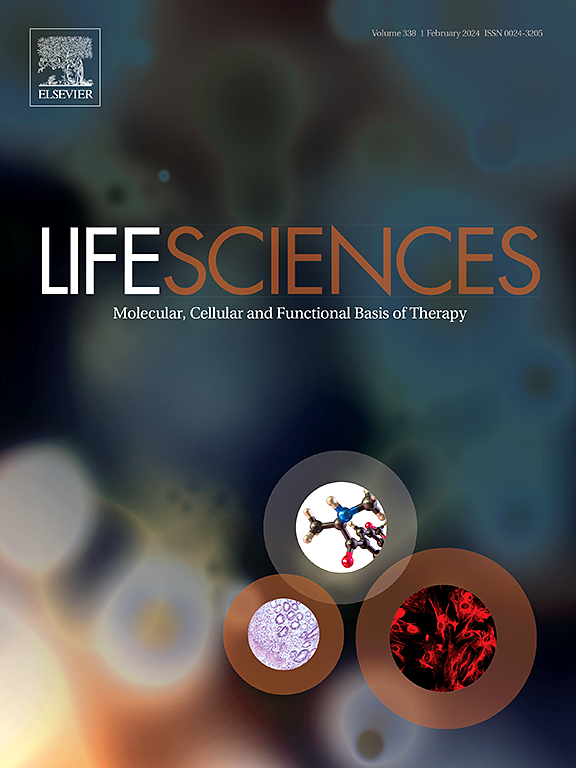白蛋白结合域融合提高了分化抑制因子-2 蛋白对结肠炎小鼠的疗效。
IF 5.2
2区 医学
Q1 MEDICINE, RESEARCH & EXPERIMENTAL
引用次数: 0
摘要
目的:人类分化抑制因子-2(hID2)蛋白是一种治疗结肠炎的有希望的候选蛋白。然而,其相对较低的分子量限制了其临床应用。为了延长其治疗半衰期,研究人员将白蛋白结合结构域(ABD)与 hID2 融合,形成了重组 ABD-hID2,ABD 与人血清白蛋白(HSA)的高亲和力是众所周知的。本研究评估了 ABD-hID2 与 hID2 相比的抗胆囊炎生物活性:主要方法:采用 Western 印迹法、尺寸排阻高效色谱法、HSA 结合测定法和药代动力学研究等方法对 ABD-hID2 进行了表征。测定了疾病活动指数、组织学病理、炎症反应、阿尔西安蓝或簇细胞染色以及紧密连接蛋白。通过 16S rRNA 基因测序分析了 ABD-hID2 治疗后肠道微生物群的变化:与 hID2 相比,ABD-hID2 的二聚体复合物减少,与 HSA 的结合亲和力高,体内血液滞留时间延长。因此,ABD-hID2在DSS和CR诱导的结肠炎小鼠模型中显示出更高的疗效,这体现在结肠炎症状的缓解、鹅口疮细胞和簇细胞功能的保护、肠粘液屏障的恢复以及异常免疫炎症反应的抑制等方面。此外,对肠道微生物群的调节可能是 ABD-hID2 对 CR 诱导的溃疡性结肠炎小鼠产生保护作用的原因之一:意义:ABD-hID2 增强了 hID2 的生物活性,有望进一步发展成为治疗结肠炎的药物。本文章由计算机程序翻译,如有差异,请以英文原文为准。
Albumin binding domain fusion improved the therapeutic efficacy of Inhibitor of Differentiation-2 protein in colitis mice
Aims
The human Inhibitor of Differentiation-2 (hID2) protein is a promising candidate for the treatment of colitis. However, its relatively low molecular weight limits its clinical application. To extend the therapeutic half-life, an albumin-binding domain (ABD), known for its high affinity for human serum albumin (HSA), was fused to hID2, resulting in a recombinant ABD-hID2. The anti-colitis bioactivity of ABD-hID2 than that of hID2 was evaluated in this study.
Main methods
Western blotting, size-exclusion high-performance chromatography, HSA binding assay, and pharmacokinetic studies were used to characterise ABD-hID2, which was induced by dextran sulfate sodium salt (DSS), Citrobacter rodentium (CR), and ABD-hID2 and hID2. The Disease Activity Index, histological pathologies, inflammatory response, Alcian blue or tuft cell staining, and tight junction proteins were determined. Alterations in the intestinal microbiota after ABD-hID2 treatment were analysed via 16S rRNA gene sequencing.
Key findings
Compared with hID2, ABD-hID2 exhibited a decreased dimer complex, bound to HSA with high affinity, and demonstrated an extended blood retention time in vivo. Consequently, ABD-hID2 exhibited increased therapeutic efficacy in both DSS- and CR-induced colitis mouse models, as evidenced by the alleviation of colitis symptoms, preservation of goblet and tuft cell functions, restoration of the intestinal mucus barrier, and suppression of abnormal immune-inflammatory responses. Additionally, the modulation of the gut microbiota may play a role in the protective effects of ABD-hID2 in mice with CR-induced ulcerative colitis.
Significance
ABD-hID2 enhances the bioactivity of hID2 and has the potential for further development as a treatment for colitis.
求助全文
通过发布文献求助,成功后即可免费获取论文全文。
去求助
来源期刊

Life sciences
医学-药学
CiteScore
12.20
自引率
1.60%
发文量
841
审稿时长
6 months
期刊介绍:
Life Sciences is an international journal publishing articles that emphasize the molecular, cellular, and functional basis of therapy. The journal emphasizes the understanding of mechanism that is relevant to all aspects of human disease and translation to patients. All articles are rigorously reviewed.
The Journal favors publication of full-length papers where modern scientific technologies are used to explain molecular, cellular and physiological mechanisms. Articles that merely report observations are rarely accepted. Recommendations from the Declaration of Helsinki or NIH guidelines for care and use of laboratory animals must be adhered to. Articles should be written at a level accessible to readers who are non-specialists in the topic of the article themselves, but who are interested in the research. The Journal welcomes reviews on topics of wide interest to investigators in the life sciences. We particularly encourage submission of brief, focused reviews containing high-quality artwork and require the use of mechanistic summary diagrams.
 求助内容:
求助内容: 应助结果提醒方式:
应助结果提醒方式:


